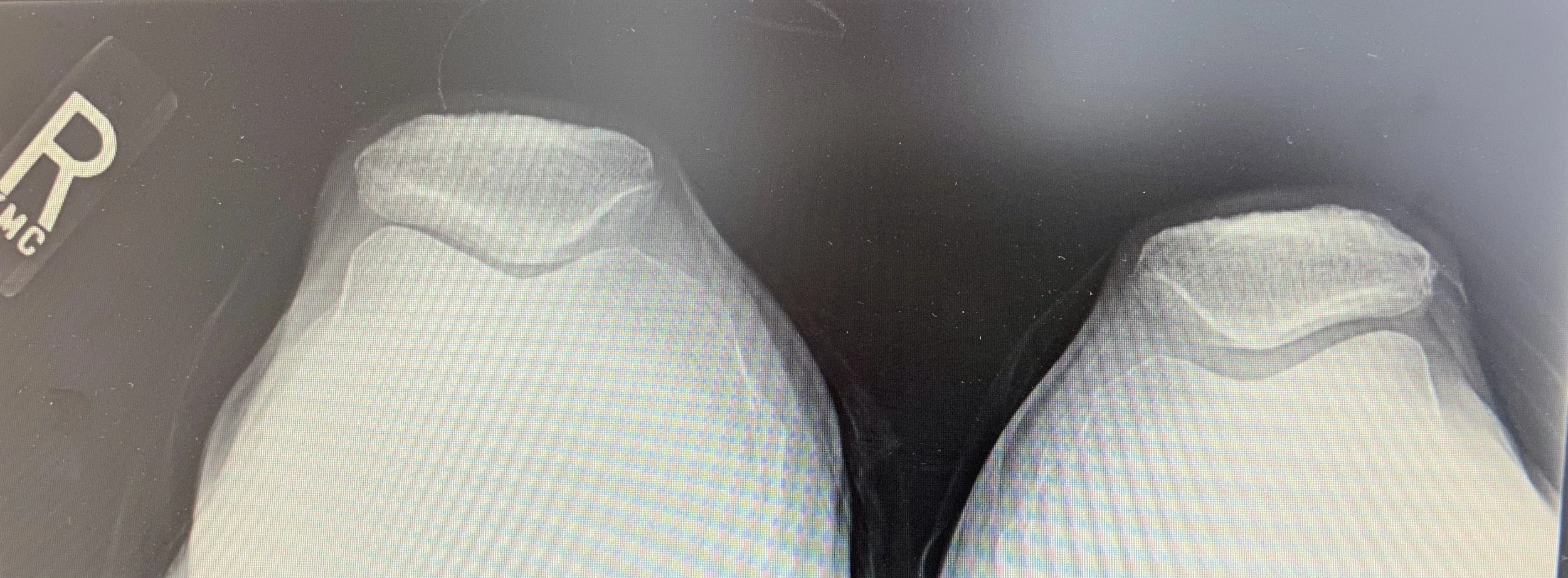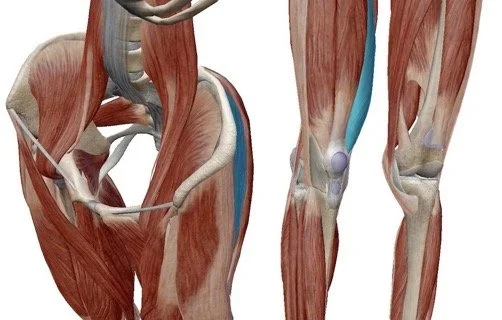Patellafemoral Syndrome
/Stopped in My Tracks
I’ve had a long-time bias against Physical Therapy. It seemed to me that PTs addressed only one body part at a time (whatever part the supervising physician prescribed) and that every problem was regarded as weakness. When my Rolfing® Structural Integration clients demonstrated their PTs’ homework regimens, the exercises were always for building strength. It seemed as though anything wrong or painful in the body could only be corrected by getting stronger. As a Rolfer dedicated to restoring holistic order, I found this notion of “strength is everything” rather simplistic.
But currently I’m seeing a physical therapist for a painful patella. The problem first showed up after peddling like crazy on my exercise bike, trying to get my heart rate up enough to qualify as “high intensity exercise.” People who have Parkinson symptoms need this kind of workout to slow progression.
Narrowed space between patella and femur on left side of image (R knee).
After stopping the bike workouts, I joined an online workout class designed specifically for people with PD. (roguept.com). It’s a great program, well designed for the movement problems that PD provokes—and it involves doing a lot of squats. When my knee went south this time, I could no longer go down steps in an ordinary way. I had to go one step at a time, leading with the sore knee.
Preferred Support
if you’re not sure about the left side support, turn the phoro upside down!
I’ve long known that I habitually support myself on my left side (you can see it in the photo). It’s common to have what I call a “preferred support leg“. This is the leg we automatically stand on when we lift the other one to put it into our pants. The support leg is usually the stronger one. Note that the official definition of “dominant leg” is the reverse of this. The “dominant” leg is the one you put into your trousers first. But definitions aside, everyone has a stronger leg, even elite athletes. In some ballet companies, dancers in the corps de ballet are positioned stage right or stage left based on imbalances like this.
For years, I’d assumed that awareness of my imbalance was all I needed to manage it. I got rolfed, I practiced yoga and took an occasional Pilates class, and I paid attention to the rhythm of my gait. Because none of that was helping now, I consulted an orthopedist who gave me good news (no arthritis, yay!) and a prescription for … yes, PT. I was dubious of course.
Underactive Muscles
The exercises are boring and really, really effective. My therapist, Leslie, is very particular and precise about where I lack strength (mainly vastus medialis oblique and gluteus medius) and where I need to stretch and release structures that have pulled the patella to one side (peroneals and iliotibial band). The VMO was a big surprise—Leslie had me compare the density of the tissue medial to each kneecap. The right side was absolutely mushy.
In the midst these wake-up calls, I discovered that I wasn’t grounding through my right big toe. I’ve been preaching the importance of tone in the big toe for supporting the medial line of the leg forever. (See this video.) Well, fellow body nerds, flexor hallucis longus also speaks to your vastus medialis—you feel the VMO activate when you press down with the tip of your toe.
Gluteus Medius (L) and Vastus Medialis Oblique (R)
Holistic After All
To really build up my right leg, I’ll have to be mindful of these areas for a good long while. But already, I can go down my front steps (30 of them) without limping.
Best of all, I’ve had fleeting moments of sensing something new and important about my stance in the world. Having two legs to rely on makes a difference in who I feel myself to be. So does being stronger. I’ve learned that strategic strengthening doesn’t interfere, but can actually contribute to holistic order.
© 2022 Mary Bond



